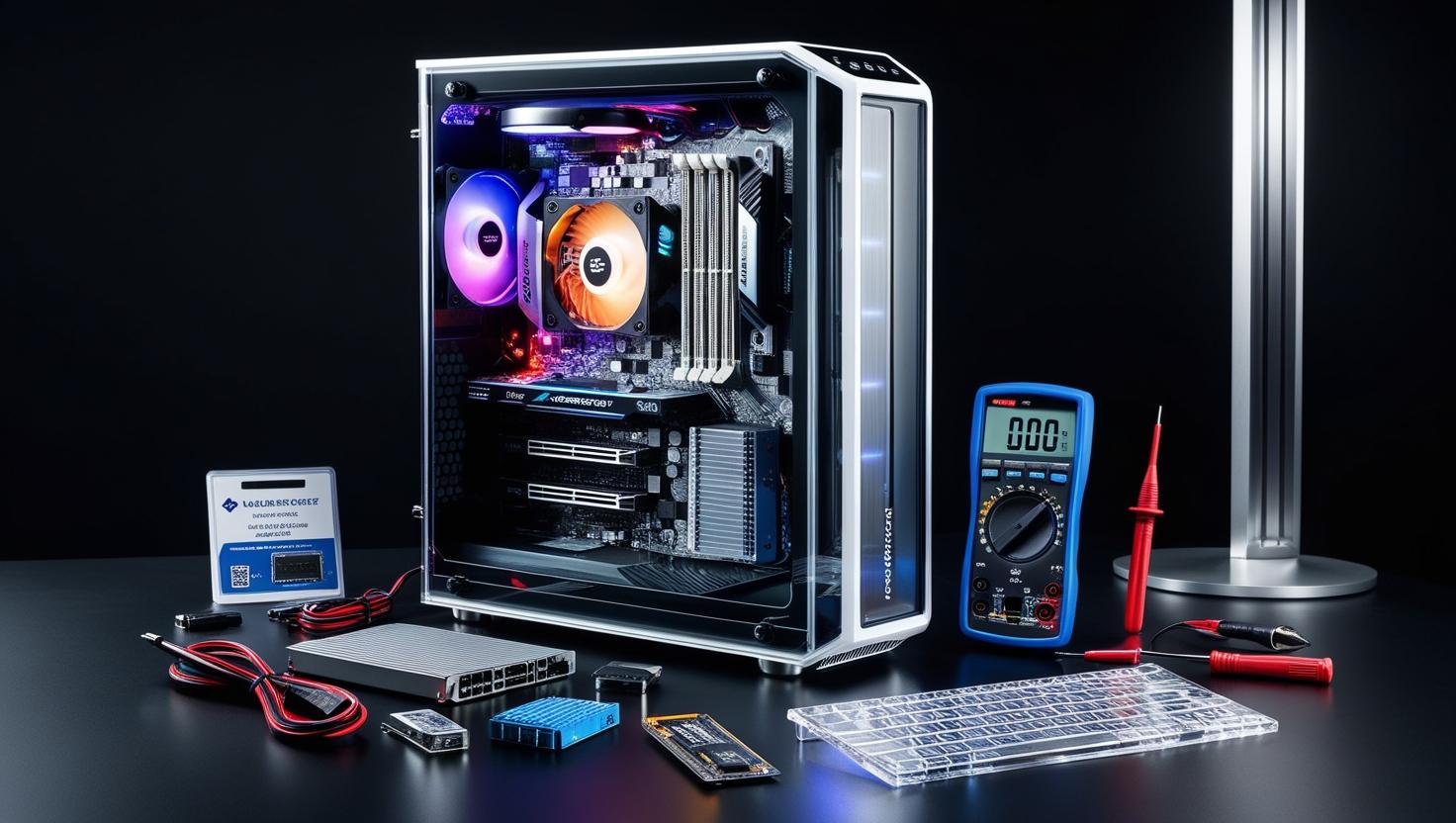Introduction
PC troubleshooting is a vital skill every computer user should develop, especially when unexpected problems arise. Experiencing issues with your PC can be frustrating, often leading many to assume hardware failure is to blame. However, before considering costly replacements, it’s crucial to perform thorough PC troubleshooting. This guide outlines essential steps to diagnose and resolve common PC problems, potentially saving you both time and money.
Table of Contents
1. Update Your System and Drivers
Outdated software can cause various issues. Begin by:
- Windows Updates: Navigate to Settings > Update & Security > Windows Update to install the latest updates.
- Driver Updates: Visit your hardware manufacturers’ websites to download and install the latest drivers, especially for your GPU, motherboard, and peripherals.
Keeping your system updated ensures compatibility and can resolve many software-related problems.
2. Check for Software Conflicts
Software conflicts can lead to system instability. To identify and resolve them:
- Safe Mode: Boot into Safe Mode to see if the issue persists. If not, a background application may be the cause.
- Clean Boot: Perform a clean boot to isolate problematic software by disabling non-essential startup programs.
- Antivirus Scans: Run comprehensive scans to detect and remove malware or viruses that could be affecting performance.
These steps help in pinpointing software-related issues without altering hardware.
3. Monitor System Temperatures
Overheating can cause random shutdowns or performance throttling. To monitor temperatures:
- Use Monitoring Tools: Applications like HWMonitor or Core Temp can provide real-time temperature readings.
- Check Cooling Systems: Ensure that fans are operational and that heat sinks are properly seated.
- Clean Dust: Dust accumulation can impede airflow. Regularly clean your PC’s interior to maintain optimal cooling.
Maintaining appropriate temperatures is vital for hardware longevity and performance.
4. Test Hardware Components
Before replacing hardware, test components to confirm failures:
- RAM: Use Windows Memory Diagnostic or MemTest86 to check for memory errors.
- Hard Drive: Run CHKDSK or manufacturer-specific tools to detect and fix disk errors.
- Power Supply: Ensure the PSU delivers adequate power. Multimeters can measure output voltages for accuracy.
Accurate testing can prevent unnecessary hardware replacements.
5. Inspect Physical Connections
Loose or faulty connections can mimic hardware failures. Steps to inspect include:
- Reseat Components: Remove and reinsert RAM, GPU, and other expansion cards.
- Check Cables: Ensure all power and data cables are securely connected.XDA Developers
- Look for Damage: Inspect for bent pins or damaged connectors that could affect performance.
Proper connections are fundamental for system stability.
6. Utilize Diagnostic Tools
Diagnostic tools can aid in identifying issues:
- BIOS/UEFI Diagnostics: Many systems offer built-in diagnostics accessible during boot.
- Third-Party Software: Tools like Speccy or SiSoftware Sandra provide detailed hardware information.
These tools offer insights that can guide troubleshooting efforts.
Recommended Tools for Effective Troubleshooting
Having the right tools can streamline the troubleshooting process. Here are some recommended products:
Techgear PCI 4-Digit PC Motherboard Diagnostic Card
Quickly identify motherboard issues with this diagnostic tool.
Buy NowAgaro Compressed Air Duster
Efficiently clean dust from electronics with this powerful air blower.
Buy NowThemisto TH-M98 Digital Multimeter
Accurately measure voltage, current, and resistance with this reliable multimeter.
Buy NowIkis 30G Thermal Grease Paste
Enhance heat transfer between CPU and heatsink with this thermal paste.
Buy NowProduct Highlights
- Techgear PCI 4-Digit PC Motherboard Diagnostic Card: This diagnostic card helps identify motherboard issues by displaying error codes, simplifying the troubleshooting process.
- Agaro Compressed Air Duster: An essential tool for cleaning dust from components, ensuring optimal airflow and cooling.
- Themisto TH-M98 Digital Multimeter: Useful for testing voltage outputs, ensuring your power supply and other components receive proper power.
- Ikis 30G Thermal Grease Paste: Applying quality thermal paste improves heat transfer between the CPU and cooler, aiding in temperature management.
Incorporating these tools into your troubleshooting toolkit can enhance efficiency and accuracy.
Conclusion
Before attributing PC issues to hardware failure, it’s imperative to conduct comprehensive troubleshooting. By updating software, checking for conflicts, monitoring temperatures, testing components, inspecting connections, and utilizing diagnostic tools, many problems can be resolved without hardware replacements. Equipping yourself with the right tools further facilitates effective diagnostics.
Remember, systematic troubleshooting not only saves money but also extends the lifespan of your PC components.
